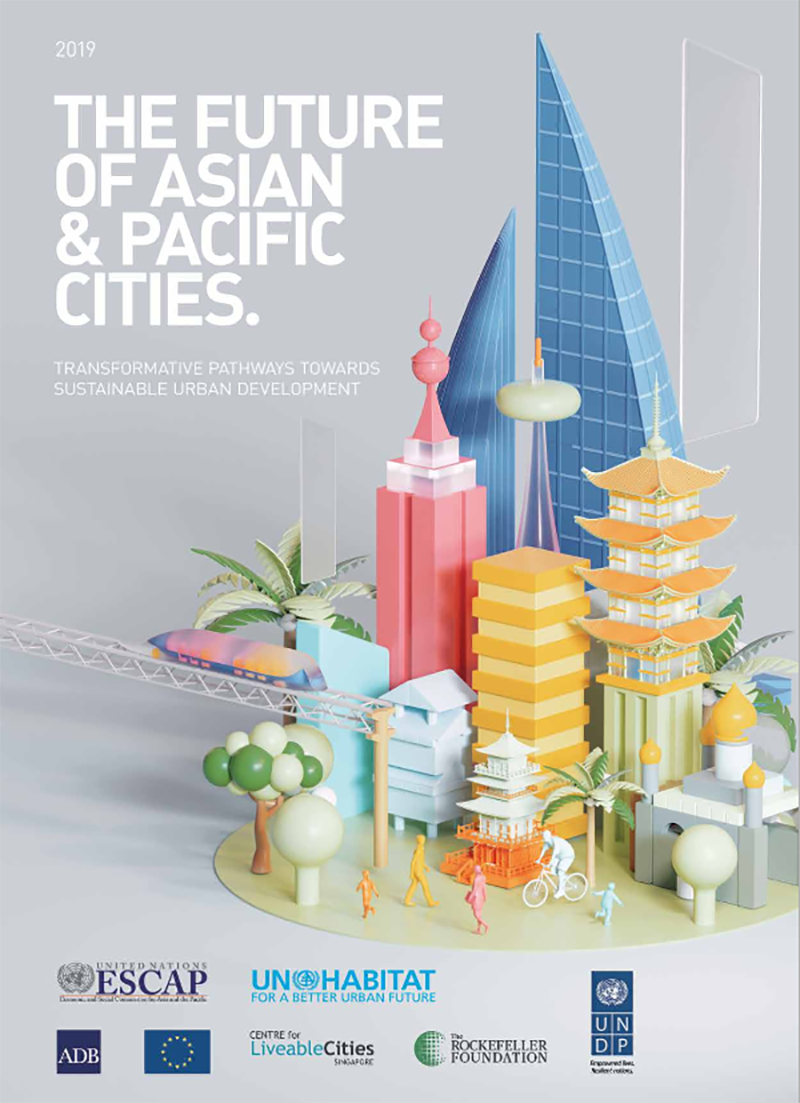Penang, 15 October 2019 - The Future of Asian & Pacific Cities Report 2019 is the third publication in a series of reports on urbanization and the realization of urban sustainability in Asia and the Pacific. This forward-looking edition is a resource to explore critical and emerging policy opportunities to realize urban sustainability for the Asian and Pacific region and help accelerate the achievement of the 2030 Agenda for Sustainable Development.
In the year 2019, for the first time in human history, the majority of the Asian and Pacific region became urban. With more than 2.3 billion people in the region now living in cities, the Asian and Pacific cities can serve as the drivers of sustainable development for the implementation of the 2030 Agenda and the New Urban Agenda. To achieve this, the report charts 15 policy pathways that can guide future urbanization in the region.
“A city should not just happen anymore. Every block, every building and neighbourhood requires careful planning. Cities can play a major role in supporting a more sustainable and inclusive future in our region. Yet, this depends on decisive action in cities and urban centres right across Asia and the Pacific,” said United Nations Under-Secretary-General and Executive Secretary of the United Nations Economic and Social Commission for Asia and the Pacific (ESCAP) Ms. Armida Salsiah Alisjahbana at the APUF opening.
“Cities in Asia and the Pacific region are at the forefront of global efforts to achieve the Sustainable Development Goals by 2030, serving as engines of economic prosperity, innovation and well-being. To ensure the full implementation of the New Urban Agenda, our cities must be better planned, managed and financed for improved resilience and to meet the needs of all citizens, including the urban poor. We must protect the environment and leave no one and no place behind,“ said United Nations Under-Secretary-General and Executive Director of UN-Habitat Ms. Maimunah Mohd Sharif.
The report identifies four major development challenges across the region: natural resource management; climate change; disaster risk; and rising inequalities. With these challenges clearly identified, the report in turn identifies four important aspects of city-making that organize the report’s policy pathways: urban and territorial planning; urban resilience; smart and inclusive cities; and urban finance.
Combined, these competencies make-up the components of today’s increasingly complex cities. A sustainable future occurs when planning lays a foundation; resilience guards against future risk; smart cities deploy the best technology for the job; and financing tools help pay for it all.
Getting these essentials right today is vital to help transition cities towards a sustainable and inclusive future, well positioned to climate challenges and to seize the opportunities of the next decades – a period that will witness both heightened impacts of global climate change as well as the proliferation of exciting new technologies that will reshape how people live, work and play in cities.
To read the full report please go here.
